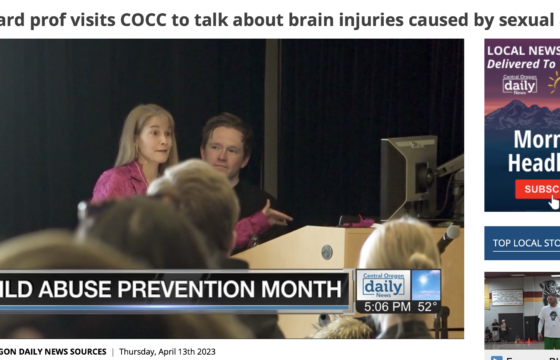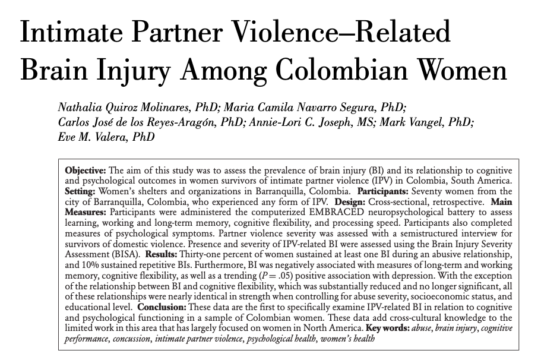Identifying strategies to advance research on traumatic brain injury’s effect on women
Please follow the above link to the press release from the National Institute of Neurological Disorders and Stroke (NINDS) regarding a new paper by Dr. Eve Valera (PI), Annie-Lori Joseph (lab member) and colleagues in the TBI field who attended the 2017 “Understanding TBI in Women” conference at the NIH, published in the Journal of Head Trauma Rehabilitation (JHTR). This paper summarizes the current state of the research on females and sex-differences in TBI and outlines limitations and future directions.
Link to paper: Valera EM et al. Understanding Traumatic Brain Injury in Females: A State-of-the-Art Summary and Future Directions. Journal of Head Trauma Rehabilitation, January 2021
Paper Abstract:
In this report, we identify existing issues and challenges related to research on traumatic brain injury (TBI) in females and provide future directions for research. In 2017, the National Institutes of Health, in partnership with the Center for Neuroscience and Regenerative Medicine and the Defense and Veterans Brain Injury Center, hosted a workshop that focused on the unique challenges facing researchers, clinicians, patients, and other stakeholders regarding TBI in women. The goal of this “Understanding TBI in Women” workshop was to bring together researchers and clinicians to identify knowledge gaps, best practices, and target populations in research on females and/or sex differences within the field of TBI. The workshop, and the current literature, clearly highlighted that females have been underrepresented in TBI studies and clinical trials and have often been excluded (or ovariectomized) in preclinical studies. Such an absence in research on females has led to an incomplete, and perhaps inaccurate, understanding of TBI in females. The presentations and discussions centered on the existing knowledge regarding sex differences in TBI research and how these differences could be incorporated in preclinical and clinical efforts going forward. Now, a little over 2 years later, we summarize the issues and state of the science that emerged from the “Understanding TBI in Women” workshop while incorporating updates where they exist. Overall, despite some progress, there remains an abundance of research focused on males and relatively little explicitly on females.







